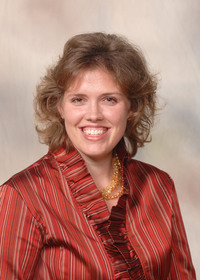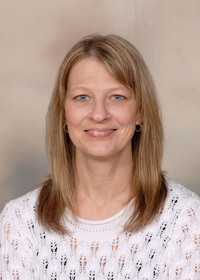The 6 C’s of Positive Youth Development: Tips for Teenager Connection
Angie knows Jasmine has been struggling since she became assistant manager and invited her to lunch to talk about it. She sensed Jasmine needed a friend to confide in. After lunch, Jasmine told Angie that she felt alone because the new job had disconnected her from her friends and family. “You’re the only one that understands me, Angie”, she said as tears ran down her face. Angie decided that she was going to help bring them together, but how?
If you identify with Angie, this publication is for you! It’s the fourth of six publications from the Positive Youth Development (PYD) Series, and it provides tips to improve connecting with youth.
Mississippi 4-H is a youth organization made up of Extension Agents, volunteers, and caring adults who utilize the 6 C’s of Positive Youth Development to help young people develop the competencies for life-long success. While this publication is intended for adults working with young people in the 4-H youth development program, it applies to adults who work with youth across a variety of programs.
_________________________________________________________________________________________________
Relationships are all about connections. Sometimes, no matter how hard you try, it just doesn’t work out. Establishing and maintaining them takes a lot of work, and relationships with young people are no exception. Why is it so hard to connect with them? How can we establish relationships that help them fulfill their potential? If you want to know, just keep reading!
Tip #1: Welcome them to the Uncomfortable Zone.
In all relationships, you start as strangers, which is uncomfortable. To get comfortable, you need to surpass the uncomfortable stage. Factors that affect teenagers’ comfort zone are:
- How much can they can trust you
- How judgmental you are
- How experienced you are
- How well you know them
- How much you care about them
Tip #2: Think about the nature of the relationship.
- How and why did we meet?
- How long have I known them?
- How often do I contact them?
- What interests do we share?
- How are we similar/different?
Ask yourself and your young people these questions to understand where the relationship currently stands, especially its weaknesses and strengths. The relationship’s strengths are the green lights, things that you should keep doing. Your weaknesses are the red lights that need improvement. This is the foundation of the relationship and the key to connection lies within it.
Tip #3: Find a common ground to work on the weaknesses.
You both need to address the relationship’s red lights directly. A good method to try is combining a strength and a weakness. For example, if a student is struggling with chemistry but enjoys cooking, then then you can teach them by tucking a lesson in the process of executing a tasty recipe. You can also host a bake sale and tell each student to bring something. They’ll be doing chemistry without realizing it! The key is to find a common ground.
Tip #4: Evaluate the activities that you do together.
You need to show young people how vital they are to their community’s well-being. A great way to do that is to get them involved in local programs and initiatives. Much like adults, young people crave feeling useful and contributing to a cause. They will feel more inclined to participate if it’s something that sparks their interest, but everyone has different tastes. Keep an open mind and offer a variety of different activities. Connecting with youth involves:
- Building a sense of community
- Providing resources
- Genuinely caring
- Offering safety
- Trusting their potential
If you would like to know what youth have gained through participation in a program, you can use the Positive Youth Development Instrument to find out. It’s a series of questions that you can ask before the program starts and again after it ends to evaluate what participants learned. You can use the following table as a guide.
CONNECTION Evaluation for PYD Program Participants
|
Tell us how strongly you agree or disagree with the following statements. |
Strongly disagree |
Disagree |
Neither agree nor disagree |
Agree |
Strongly agree |
|
I have a wide circle of friends. |
|||||
|
I think it’s important to be involved with other people. |
|||||
|
My friends care about me. |
|||||
|
I feel connected to my teachers. |
|||||
|
Having friends is important to me. |
|||||
|
I feel connected to others in my community. |
|||||
|
I have adults in my life who are interested in me. |
|||||
|
I feel connected to my parents. |
Adapted from Arnold et al., (2012)
Summary
Extension agents and volunteers who work in positive youth development programs such as 4-H strive to build relationships with young people. Creating solid connections with youth is crucial for their well-being. You can do this by:
- welcoming them to an uncomfortable zone,
- thinking about the nature of the relationship,
- finding a common ground, and
- evaluating the activities you do together.
The relationships you have with them can have positive long-term effects on their lives. Connection is essential to the human experience because it gives us a sense of belonging. Connection is affection because it shows that you are cared for and care for others.
Angie could feel Jasmine loosening up during lunch and they talked about everything, realizing they have the same taste in food and music! Jasmine seemed lighter, calmer, and even happier. She was glad she could make Jasmine feel better after a tough week. Angie knew their bond was getting stronger, but she wanted to make it clear to Jasmine that she cared for her as a true friend, leading to the fifth C of PYD: Caring.
Connection is the fourth C of the PYD series. In the next publication, Angie and Jasmine will talk about caring, the fifth C of the series.
References
Arnold, M. E., Nott, B. D., & Meinhold, J. L. 2012. The Positive Youth Development Inventory Full Version. © Oregon State University. All Rights Reserved.
Erlich, V., Deutsch, N., Fox, C., Johnson, H., & Varga, S. 2016. Leveraging Relational Assets for Adolescent Development: A Qualitative Investigation of Youth-Adult “Connection” in Positive Youth Development. Qualitative Psychology, 3 (1), 59-78.
Freeman, B. (2019). Promoting global health and well-being of Indigenous youth through the connection of land and culture-based activism. Global Health Promotion, 26 (3), 17-25.
Jones, M., Dunn, J., Holt, N. & Bloom, G. (2011). Exploring the ‘5Cs’ of positive youth development in the sport. Journal of Sport Behavior, 34 (3), 250-267.
Kress, C. (2006). Youth leadership and youth development: Connections and questions. New Directions for Youth Development, 109, 45-59.
Semanchin, J., & LaLiberte, T. 2013. Measuring youth connections: A component of relational permanence for foster youth. Children and Youth Services Review, 35 (3), 509-517.
Storer, H., Barkan, S., Stenhouse, L., Eichenlaub, C., Mallillin, A., & Haggerty, K. (2014). In search of connection: the foster youth and caregiver relationship. Children and Youth Services Review, 42, 110-117.
Taylor, H. & McGlynn, L. 2009. The connection: schooling, youth development, and community building-The Futures Academy case. New Directions for Youth Development, 122, 19-40.
Zeldin, S. & Topitzes, D. 2002. Neighborhood experiences, community connection, and positive beliefs about adolescents among urban adults and youth. Journal of Community Psychology, 30 (6), 647-669.
___________________________________________________________________________________
Publication 3928 (POD-08-23)
By Patricia Marie Cordero-Irizarry, Doctoral Student, Agricultural and Extension Education; Mariah Smith Morgan, PhD, Associate Extension Professor, and Donna J. Peterson, PhD, Extension Professor, Human Sciences.
The Mississippi State University Extension Service is working to ensure all web content is accessible to all users. If you need assistance accessing any of our content, please email the webteam or call 662-325-2262.



